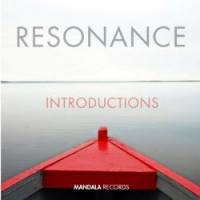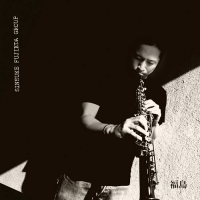Home » Jazz Articles » Multiple Reviews » Three New Another Timbre Releases
Three New Another Timbre Releases
 Antoine Beuger
Antoine Beuger Cantor Quartets
Another Timbre
2013
Dutch-born flautist Antoine Beuger was one of the founders of Wandelweiser back in 1992. Since then, his compositions and recordings have mainly been published by Editions Wandelweiser but this album plus Dedalus (Potlatch, 2013) and This Place / Is Love (Erstwhile, 2013)—recorded with his fellow Wandelweiser members Jürg Frey and Michael Pisaro, respectively—represent a surge of Beuger releases compared to his previously modest output. Yes, interest in Wandelweiser continues to grow...
Unlike on those other recent releases, Beuger himself does not play on Cantor Quartets, no great loss as the music here is produced by a first-rate quartet of players with extensive experience of Wandelweiser—in fact, all four had key roles on the epic six-CD set Wandelweiser Und So Weiter (Another Timbre, 2012), which is now reprinted and available again.
The combination of clarinet, trombone, double bass and zither was well chosen to render pages from Beuger's Cantor Quartets; that composition consists of fifteen pages (although only four of them are played here), each containing four lines of seven notes each, intended to be played gently and for a long or very long duration. Each page is played as a "round" with the second player beginning the first line as the first player begins the second line, so that each page starts as a solo then becomes a duo then a trio before ending as a quartet. The sounds of the four instruments are distinct enough for that structure to be clearly heard without any blurring of the boundaries between them. The music is on an epic scale, the renditions of the four pages taking just over two-and-a-half hours and filling two CD's. As so often with Wandelweiser pieces, the emphasis is on the instruments' sounds and there are frequent silences to frame those sounds. All four pieces here evolve slowly and deliberately with their own irrefutable logic and tranquility.
 Christoph Schiller
Christoph Schiller Variations
Another Timbre
2013
Stuttgart-born spinet player Christoph Schiller has appeared on three previous Another Timbre releases, improvising in two intimate duos and a trio, in the company of musicians including saxophonist Michel Doneda and trumpeter Birgit Ulher. Variations differs considerably from those albums, for Schiller is the only musician featured on here and as well as spinet and amplified objects he also plays piano, his original instrument. The album's seven tracks entitled Variation 1 to 7 may raise expectations that Schiller is starting with a "theme" and then improvising variations upon it... but nothing could be further from the truth.
In fact, those seven tracks are closely related to each other but not in such a conventional way. To construct the tracks, Shiller improvised six separate parts— two on spinet, two on objects and two on piano—each lasting approximately five-minutes. In typical fashion, each of the six parts has frequent silences or quieter passages. "Variation 1" consists of the first spinet part alone, while "Variation 2" adds the second spinet part alongside the first one and "Variation 3" matches the second spinet part with the first objects part and so on (check the track listing and all becomes clear...) Consequently, each of the six parts is heard twice, on two consecutive tracks.
The whole album is given an overarching structure by the way it is constructed, a structure which creates coherence and flow, making it very easy on the ears. In addition, the repetition of each instrumental part creates an intriguing psychological effect, namely that the two uses of a part sound radically different depending on whether it is heard alone or with another part and, in the latter case, what that part is. For instance, comparing "Variation 5" with "Variation 6," the first piano part sounds very different when juxtaposed with the second objects part compared to when it is combines with the second piano part in an effective piano duo. This is a concept that could be used again and again, coming up fresh every time. Impressive stuff.
 Anders Dahl & Skogen
Anders Dahl & Skogen Rows
Another Timbre
2013
The nine-member ensemble Skogen released the highly impressive Ist gefallen in den Schnee on Another Timbre in late 2012. It consisted of one composition, the title piece, by the ensemble's pianist Marcus Granberg. It showed them to be capable of mixing improvised and composed elements together to create an uncluttered piece with a unique sense of space and beauty. All of which created a certain sense of anticipation at the arrival of their new album Rows. And despite it being rather different, this is a worthy follow-up.,
The line-up of the ensemble is similar to before, the most noticeable changes being the loss of Leo Svensson Sander on cello and John Eriksson on vibraphone & crotales and the addition of Ko Ishikawa on sho. Crucially, the group still contrasts the sounds of conventional instruments with electronic sounds plus the ringing of bows and glasses. A more significant difference is the music itself; rather than one extended piece, it consists of nine shorter pieces composed by Anders Dahl. He set out to create the simplest twelve-tone music he could think of. Each of his "rows" consists of a different permutation of the twelve notes of the chromatic scale, each note being played once and once only per row. The musicians are allowed considerable freedom: they can play the note however they like; only the letter for the note is specified so they can play it in any octave; they can also skip any note or replace it with an unpitched sound or noise. The end results show considerable variations of duration—the longest lasting eight minutes, the shortest two; the mood and style of the pieces shows just as much variation, largely dependent on the extent to which individual musicians exploit the freedoms they are given. But, as a means of co-ordinating the playing of an ensemble of this size, Dahl's compositions are very successful and the end results extremely satisfying.
It is a measure of the success of this batch of releases that it is virtually impossible to rank order them or pick "the best." All three are ingeniously conceived and superbly executed. Another Timbre goes from strength to strength.
Tracks and Personnel:
Cantor Quartets
Tracks: 38:10; 39:46; 38:44; 33:57.
Personnel: Jürg Frey: clarinet; Sarah Hughes: e-bow, zither; Dominic Lash: double bass; Radu Malfatti: trombone.
Variations
Tracks: Variation 1 spinet; Variation 2 spinet 1 + spinet 2; Variation 3 spinet 2 + objects 1; Variation 4 objects 1 + objects 2; Variation 5 objects 2 + piano 1; Variation 6 piano 1 + piano 2; Variation 7 piano 2.
Personnel: Christoph Schiller: spinet, objects / amplification, piano.
Rows
Tracks: Row 32 for Björn Nilsson; Row 36 Numb; Row 35; Row 28 Interference; Row 24 Four steps forward, one step back; Row 26; Row 29 Palindrome; Row 21; Row 31 White Noise.
Personnel: Skogen: Angharad Davies: violin; Magnus Granberg: piano, clarinet; Ko Ishikawa: sho; Anna Lindal: violin; Toshimaru Nakamura: no-input mixing board; Henrik Olsson: bowls, glasses; Petter Wästberg: contact microphone, objects, feedback; Erik Carlsson: percussion (5, 8).
Tags
PREVIOUS / NEXT
Support All About Jazz
 All About Jazz has been a pillar of jazz since 1995, championing it as an art form and, more importantly, supporting the musicians who make it. Our enduring commitment has made "AAJ" one of the most culturally important websites of its kind, read by hundreds of thousands of fans, musicians and industry figures every month.
All About Jazz has been a pillar of jazz since 1995, championing it as an art form and, more importantly, supporting the musicians who make it. Our enduring commitment has made "AAJ" one of the most culturally important websites of its kind, read by hundreds of thousands of fans, musicians and industry figures every month.


















